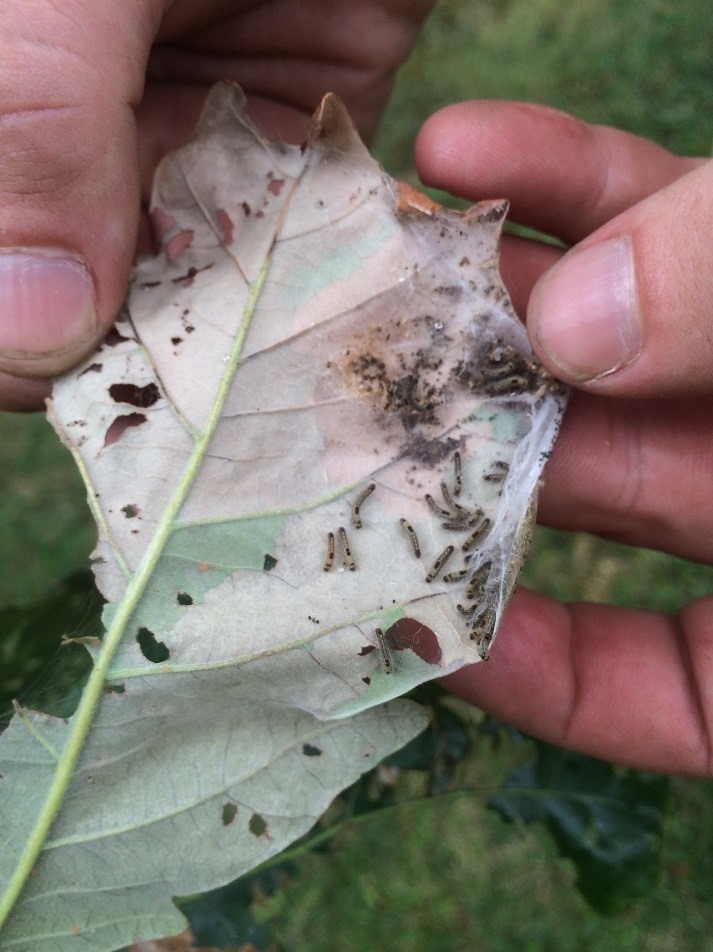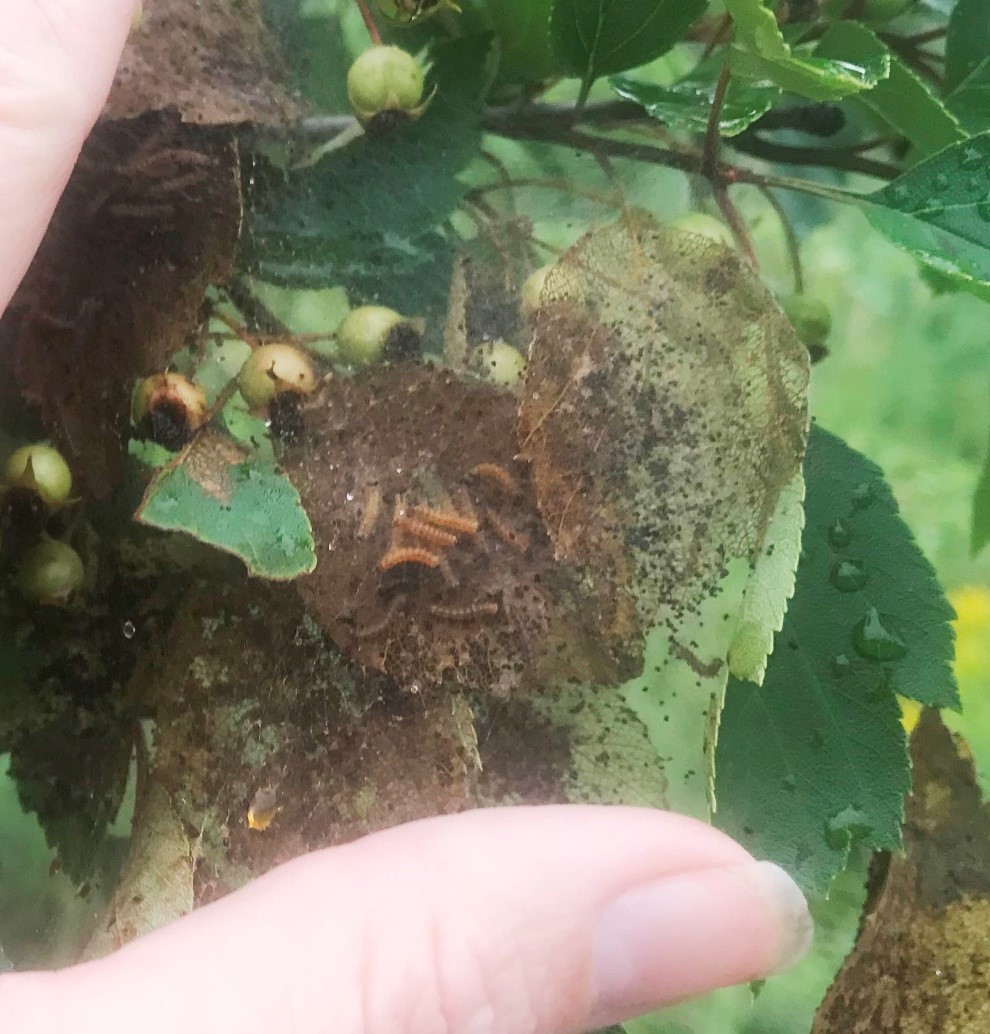Browntail Moth Update #10- August 4, 2022
It has been a little while since our last update in July, and conditions in the field have changed. The adult moths should be mostly, if not all, gone by now, with the females having laid their eggs in July on host foliage. Those egg masses have begun hatching, although there are areas we have not observed emergence.
Newly hatched caterpillars will feed communally on host plants from now until the end of September or the beginning of October, depending on the weather. They will also start building their winter web for shelter through the coldest months.
As the young caterpillars feed, they graze on the outer surface of the leaf without consuming the entire leaf. This damage is called skeletonization and causes the leaf to die and turn a bronzy-copperish color. When we perform our aerial browntail moth (BTM) surveys in the late summer, we use this damage to help identify where BTM populations are severe.
Summer treatment of the very young caterpillars can be difficult for a few reasons:
- The damage from the younger caterpillars can be difficult to detect.
- Caterpillars are not necessarily found on the same trees defoliated previously in the season, although this is possible in areas with high populations. If you can’t tell whether or how badly infested trees are, plan to observe them more closely over the winter and decide whether and how to treat them before spring. Do not treat uninfested trees.
- Caterpillars produce silk and feed under it, limiting their exposure to non-systemic pesticides.
- Soil and tree conditions can affect the uptake of systemic insecticides and may lead to poor control by these products.
The caterpillars and webs of our native fall webworm (FWW) are also present across much of Maine. In late summer, distinguishing between the two can be difficult, especially if webs are out of reach. FWW webs will often, but not always, be larger this time of year. Later in the season, as BTM colonies build up silk along their travel routes on the twigs of hosts, this can be also be used to distinguish BTM (bright white silk on twigs) from FWW (lacking bright white silk). Often, the easiest way to differentiate between the two this time of year is the size of the caterpillars. Caterpillars of BTM will generally not exceed one quarter inch in length until next year. Those of FWW are variable in size at this point, but many are already longer than a quarter inch. If webs are out of reach, waiting for more distinguishable differences between the two structures in fall may be the only way to determine the resident’s identity.
 Image: Newly hatched browntail moth caterpillars and the foundations of their winter web. Note the small size and two dark spots towards the head.
 Image: Young fall webworm. Note the lack of two dark spots.
Although much less common this time of year, exposure to hairs from previous seasons’ caterpillars can cause irritation and other symptoms, these exposures are most likely during activities that might stir up hairs in the environment, especially during dry conditions. They can also happen through contact with pupal cocoons (often in host foliage and sheltered areas), or surfaces that hairs settled on that have not been washed clean. Those caterpillars now feeding on the leaves are unlikely to cause a reaction in most people.
|